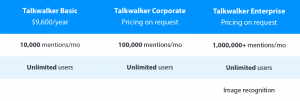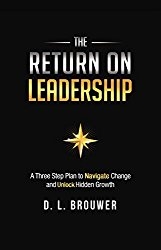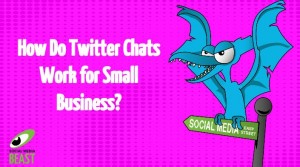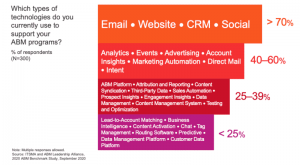In previous posts we have explained how to segment your contacts to optimize overall your ROI. But what happens when people in your network no longer fit their segment?
According to eMarketer, with segmentation 39% of people saw better open rates, opt-out rates and unsubscriptions were lower for 28% of people, 24% saw improved email deliverability, leads, and revenue. Cleary, segmentation is key to successful customer nurturing and achieving a good ROI.

http://www.business2community.com/email-marketing/6-ways-to-segment-your-email-list-to-improve-your-success-01268444
Here are ways to think of how to re-segment your contacts:
Physically Reorganize:
Since your contacts change their relationship with you, your strategy to grow your relationship with them needs to change as well. If a customer completes a sale, then tactics to lure them in like a first time customer will not have the same effects, they already know the product and need you to treat them differently. Your strategy needs to shift towards nurturing the current customer to turn them into a repeat buyer.
You can reorganize your contacts in a few different ways. You can change the tags you have associated with the customer on your email to keep their information up to date. You can update their information in your contact lists, so you know what is relevant to their interests. Another method, in Contactually you can rearrange your contacts by changing what bucket they are in. This will allow you to change your contacting schedule.

Change the Time Frame
Nurturing your contacts, leads, customers, and past clients all require different intervals of contact. A sale you are trying to make will require more contact within a follow-up system. You can send them frequent emails explaining how beneficial your product is, and how they benefit from the purchase.
Contrary to a new client, current clients need less attention. Once they have purchased your product, you might contact them in the early post purchase time frame to help them better use the product, but after a while your mail just clogs their inbox and are likely to be deleted without a second thought. When a customer changes what segment they fall under, they will expect different forms of aid from your company.
According to KISSmetrics, the two most important parts of customer service are timely responses and dealing with the least amount of people to resolve an issue. A new client may want you to hold their hand through the trial period, and expect you to answer the phone immediately. Returning customers may have less pressing issues and be more willing to wait for your response, allowing you time to concentrate on your new customers.
Having your customers properly segmented allows you to take care of the client’s issues in a timely manner. Correctly organizing contacts lets your team help clients immediately rather than sending a caller from person to person to get information. Your team will also know the proper amount of time to follow up with the callers based on how the clients are organized.
As mentioned before, with Contactually’s buckets you are able to decide how often you need to follow up with your contacts. Changing what bucket your contacts are organized under allows you to change the time frame of when to follow up and gives you notifications when that time comes.
Even after purchase your contacting the client to give them support shows the client that you value them as a customer rather then just wanting them for their money. Sending an email or posting on social media keeps the good fresh in their mind.
Re-segmenting contacts can be based on what phase of the sales process the client falls under as well as the time period of when they purchased. Contacts can also be segmented based on how often you want to follow up with them.
Try a New Approach
As your contacts shift segments, your focus on how and why you communicate with them evolves. For instance, language for sales and support tend to be different. Before a purchase your sales team constructs a sales program with tailored language, while the marketing team aims to draw in potentials and catch their interest. After snagging their interest you are going to want to change the way you speak to the lead.
As your approach changes depending on the phase of the nurturing process, your segmentation should shift and follow. You can arrange contacts based on how you are focusing on them and the approach for follow-ups and sales. If someone seems unresponsive to one style of contact, change your methods of contact to be a different style.
If you already have your contacts segmented by purchase cycle you can try a segment based on demographic. For instance, contacts originally segmented by age, could be shifted to be based on what type of company they work for or location. You can even use the change is segmentation as a way to reach out to them. For instance, mention news in their area if you changed your segmentation to location, or industry news if you grouped contacts by company type.
Reopen Communication Channels
After a purchase or a cancelation, it is easy to become distant and lose contact. Depending on what type of contact you want to start, you can change how you segmented your contacts to optimize revenue and increase repeat customers.
One way you can restart correspondence is to ask for a review, or what the customer likes or dislikes about your product. If you have a segment for past clients, then you can further break down the grouping by people who did not have a use for your product and those who did not like your product. Past clients who canceled your services due to lack of need, can be related to by discussing how your product can benefit them in ways they didn’t realize.
The past clients who didn’t enjoy your service should be contacted in an attempt to improve your product and possibly bring back these clients.
Lists can be grouped based on what clients hope to get from your product. To discover what your clients want from your product, you need to contact them. Just like past clients, allowing current customers to state their opinions on your product allows them to be more active participants in your company, helping you shape and expand your services based on their responses. When companies respond to their customers via social media the customers tend to spend 20% to 40% more with the company.

Catch the Ones Falling Behind
As mentioned in number four, offer a new and improved product. Not that you need to completely redo or scrap the one you already have, but with every tweak in the product, let your contacts know.
If there is a group of users who seem to be falling behind in their usage, or not consistently using your service, segment them under a group to be updated. The same can be done for eager clients or new clients to keep their interest.
Leaving your contacts in the wrong segments prevents you from effectively communicating. Figure out the best form of segmentation for your contacts then create a method to ensure your contacts are properly segmented.

(193)







